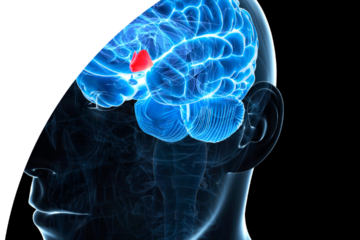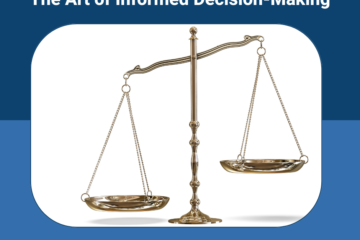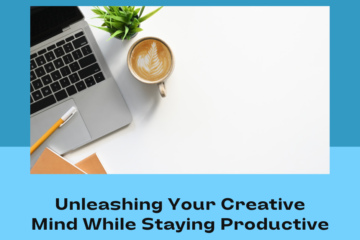
Introduction:
In a world full of uncertainty and fast change, it’s important for personal growth and making a better future to be open to the future. People can reach their full potential and handle challenges and chances that come their way if they think ahead and get ready for what’s coming by developing ‘Mastering Foresight’. In this article, we’ll look at what foresight is, how it applies to our personal and professional lives, and how we can build a “foresight mindset.”
Understanding Foresight
Foresight is the ability to see trends, possibilities, and events that will happen in the future. It goes beyond short-term thinking and gets into long-term planning. By practicing foresight, people can gain a competitive edge, make better choices, and get ready for change more effectively. People can take advantage of opportunities and reduce risks by predicting trends and keeping ahead of the curve.
Embracing Change
Change can be scary and often makes people afraid and resistant. But accepting change is a key part of growing as a person and reaching one’s full potential. To get past reluctance, it’s important to have an open mind and be willing to change. To accept change, we have to let go of old ways of thought and be open to new ideas. By working on being flexible and open, people can confidently handle changes and turn problems into possibilities.
Developing a Foresight Mindset:
Having a foresight attitude means doing certain things and getting into certain habits that help you be proactive and think about the future. It’s a process that never ends, so you have to keep working at it and be open to new ideas and ways of doing things. Let’s break down the most important parts of building a mindset for the future:
Continuous Learning:
You need to keep learning to keep up with new trends, technologies, and other changes. By committing to learning throughout life, people can grow their knowledge and stay flexible in the face of change. This includes reading books, going to meetings or webinars, taking classes, and looking for information about new developments in their field of interest.
Seeking Diverse Perspectives:
Having a forward-looking mindset means constantly looking for different points of view and accepting diversity. By learning about different points of view, countries, and backgrounds, people can get new ideas and question their own beliefs. This can be done by talking with people from different backgrounds, going to international events, or actively seeking out different points of view by reading or using the internet.
Learning from Successful People:
People who are successful and have a “foresight mindset” can be great sources of inspiration to learn from. By looking at their plans, approaches, and how they make decisions, people can learn important lessons that they can use in their own lives. Examining how these great people deal with problems and take advantage of opportunities can teach us a lot and help us grow as people.
Consistent Effort:
To develop an attitude of foresight, you have to work hard and consistently. It’s not a one-time thing, but a process of self-improvement and growth that goes on all the time. It means actually doing things like staying curious, thinking critically, and being open to new possibilities, which are all habits and strategies that go along with foresight. To build a mindset of foresight over time, you need to keep applying these rules.
Strategic Planning:
Strategic planning is an important process that helps people turn their ideas into steps that they can take. It helps people reach their long-term goals and make their ideas come true. Here are the most important parts of strategic planning:
Setting Long-Term Goals:
Setting clear and specific long-term goals is the first step in strategic planning. These goals show what people want to do or what they want to accomplish in the future. When people have a clear idea of where they want to be, they can make decisions and take steps that help them get there.
Creating Action Plans:
Once the long-term goals are set, the next step in strategy planning is to create action plans. Action plans show the exact steps, jobs, and strategies that are needed to reach the goals. They break the goals down into smaller, more doable steps that can be done over time.
Monitoring Progress:
Part of strategic planning is keeping an eye on and judging how well the goals are being met. By looking at the work on a regular basis, people can spot any changes or problems that need to be fixed. This process of keeping an eye on things lets the action plans be tweaked and changed as needed to stay on track with the long-term goal.
Alignment with Long-Term Vision:
Strategic planning makes sure that all actions and choices are in line with the long-term vision. It lets people make choices that are consistent with what they want to happen in the future. By thinking about how each choice might affect long-term goals, people can make smart decisions and prioritize actions that help them reach their general vision.
Informed Decision-Making:
Strategic planning gives people the tools they need to make well-informed choices based on their foresight. It includes looking at possible risks, opportunities, and different ways to move forward. People can make decisions that give them the best chance of reaching their long-term goals by thinking about the effects and possible results of their options.
Proactive Decision-Making
Making decisions in a proactive way is a key part of making a better future. It means thinking about how our choices will affect us in the long run and making decisions based on what could happen in the future instead of what we want right now. People can make smart choices by using techniques like scenario planning, risk analysis, and thinking about more than one option. People can make decisions that are in line with their long-term goals and visions if they think about the possible outputs and results.
Realizing Personal Potential
Having a clear view of the future is a big part of reaching your full potential. To reach our full potential, we need to think about ourselves and keep getting better. By knowing what we’re good at and what we need to work on, we can set goals that are in line with our vision and move toward self-actualization. It’s important to have a growth attitude and see mistakes as chances to learn and get better. By working hard and making a pledge to personal growth, we can reach our full potential and make the world a better place.
Conclusion:
Foresight is the key to reaching your full potential and making a better future for yourself. By understanding the idea of foresight, being open to change, developing a foresight mindset, engaging in strategic planning, making proactive choices, and realizing their own potential, people can navigate the complexities of life with confidence and purpose. It is important to put these ideas into practice in our daily lives.
We suggest that you look into more resources and workshops on this topic to learn more about foresight and get more tools and techniques that you can use right away. Adopt the power of vision, and let’s make a better tomorrow together.
FAQs
Q: How can I stop being afraid of change?
A: Accepting your power to change is the first step to getting over your fear of change. Start by realizing that change is a normal part of life and can lead to growth and new possibilities. Develop a growth attitude, ask for help from others, and break the change down into smaller steps that you can handle.
Q: How will planning ahead help me reach my long-term goals?
A: Strategic planning helps you reach your long-term goals by making sure that your actions are in line with your vision. It helps people figure out their priorities, set clear goals, and make action plans so they can keep track of their progress. By sticking to a strategic plan, people can stay on track and make choices that help them reach their long-term goals.
Q: What is the link between personal ability and being able to see the future?
A: Personal potential is related to foresight because it includes imagining a better future and working toward it. By practicing foresight, people learn more about their skills, weaknesses, and options. This self-awareness lets them set goals that are important to them and take steps to reach their full potential.



0 Comments